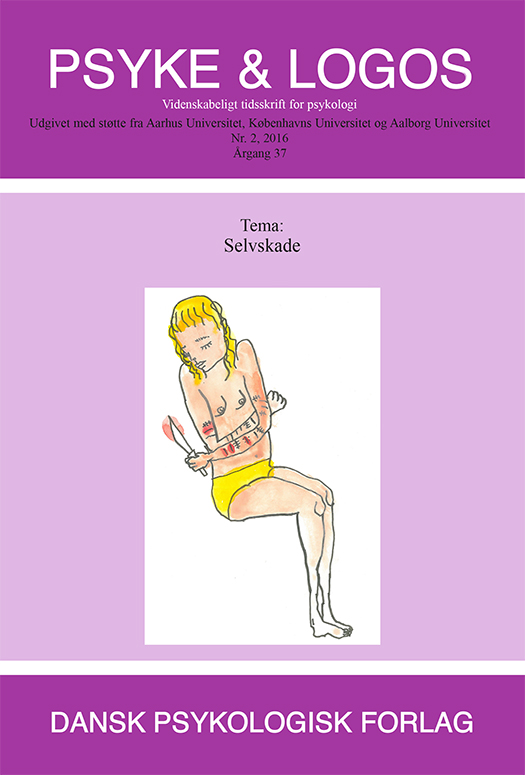Ikke-suicidal selvskade - et afhængighedssyndrom?
DOI:
https://doi.org/10.7146/pl.v37i2.25748Resumé
It is a common clinical experience that individuals with non-suicidal self-injury, especially cutters, intensify their self-harming behavior and develop an addiction-like condition as time goes by. Some researchers have explained this addiction-like condition as a result of loss of impulse control, while others have pointed out that non-suicidal self-injury
develops into a real psychological and/or physiological addiction (auto addiction). In this study, a sample of adult psychiatric patients (N = 58) is examined, using a questionnaire for addiction to self-harm. The WHO ICD-10 criteria for dependence syndrome (addiction) normally used in connection with drugs or alcohol, are reformulated and adapted to self-harm. 88% (N = 49) of the respondents meet WHO’s criteria for being
addicted to non-suicidal self-injury, e.g. they hurt themselves more and more often, have cravings for self-injury and experience abstinence symptoms if it is not possible for them to hurt themselves. 79% (N = 46) report that they injure themselves impulsively and 42% (N = 23) do not feel pain when they self-injure. A positive correlation between impulsiveness and absence of pain experience is found. It is concluded that addiction to self-injury occurs as an interaction of positive and negative reinforcement.
Downloads
Publiceret
Citation/Eksport
Nummer
Sektion
Licens
Ophavsret er tidsskriftets og forfatternes. Det er gældende praksis, at artikler publiceret i Psyke & Logos, som efterfølgende oversættes til andet sprog, af forfatteren frit kan publiceres i internationale tidsskrifter, dog således at det ved reference fremgår, at den oversatte artikel har et forlæg i en dansksproget version i Psyke & Logos. Artikler kan frit deles og linkes til på forsknings- og undervisningsnetværk (så som Blackboard). Link foretrækkes, fordi det giver oplysning om brug af tidsskriftets artikler.




